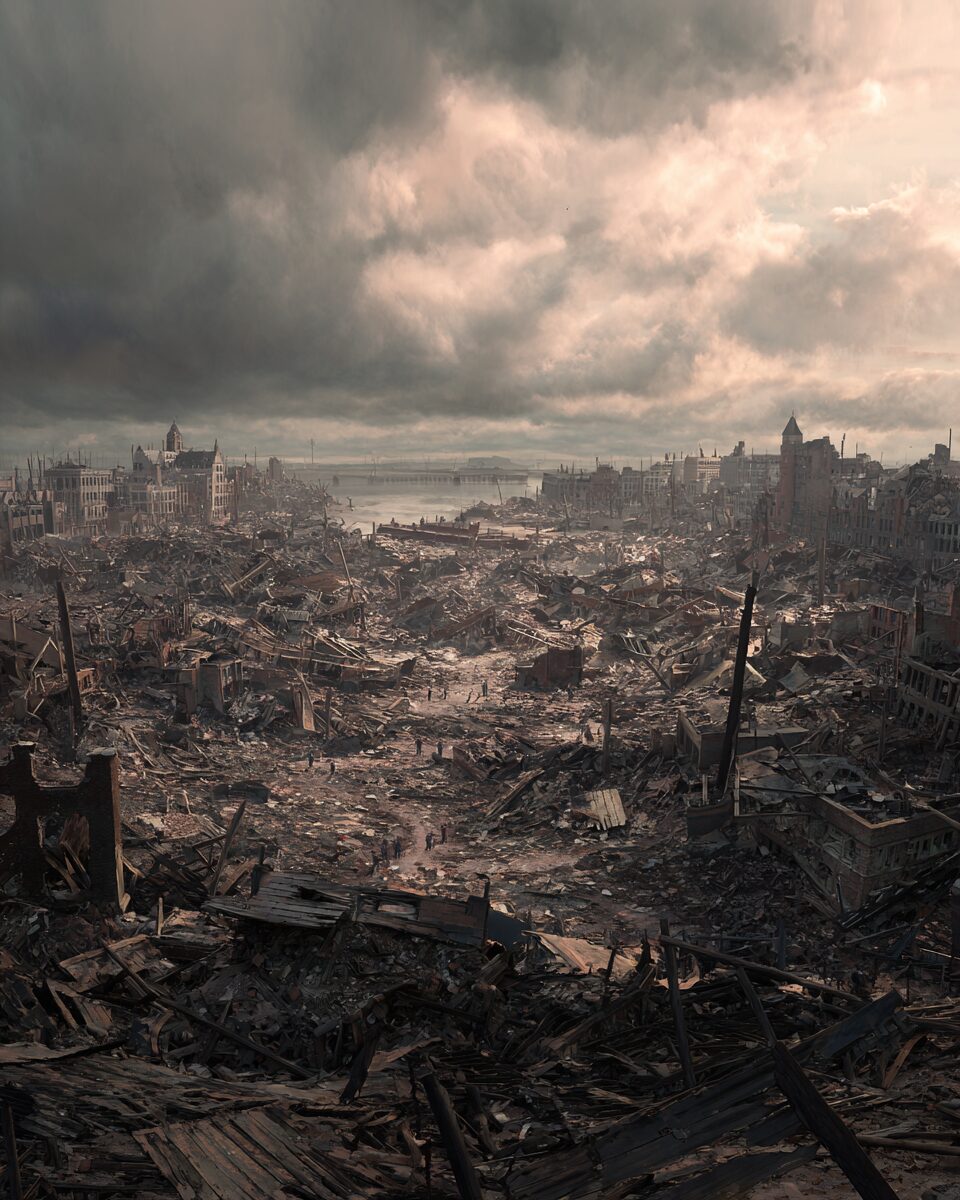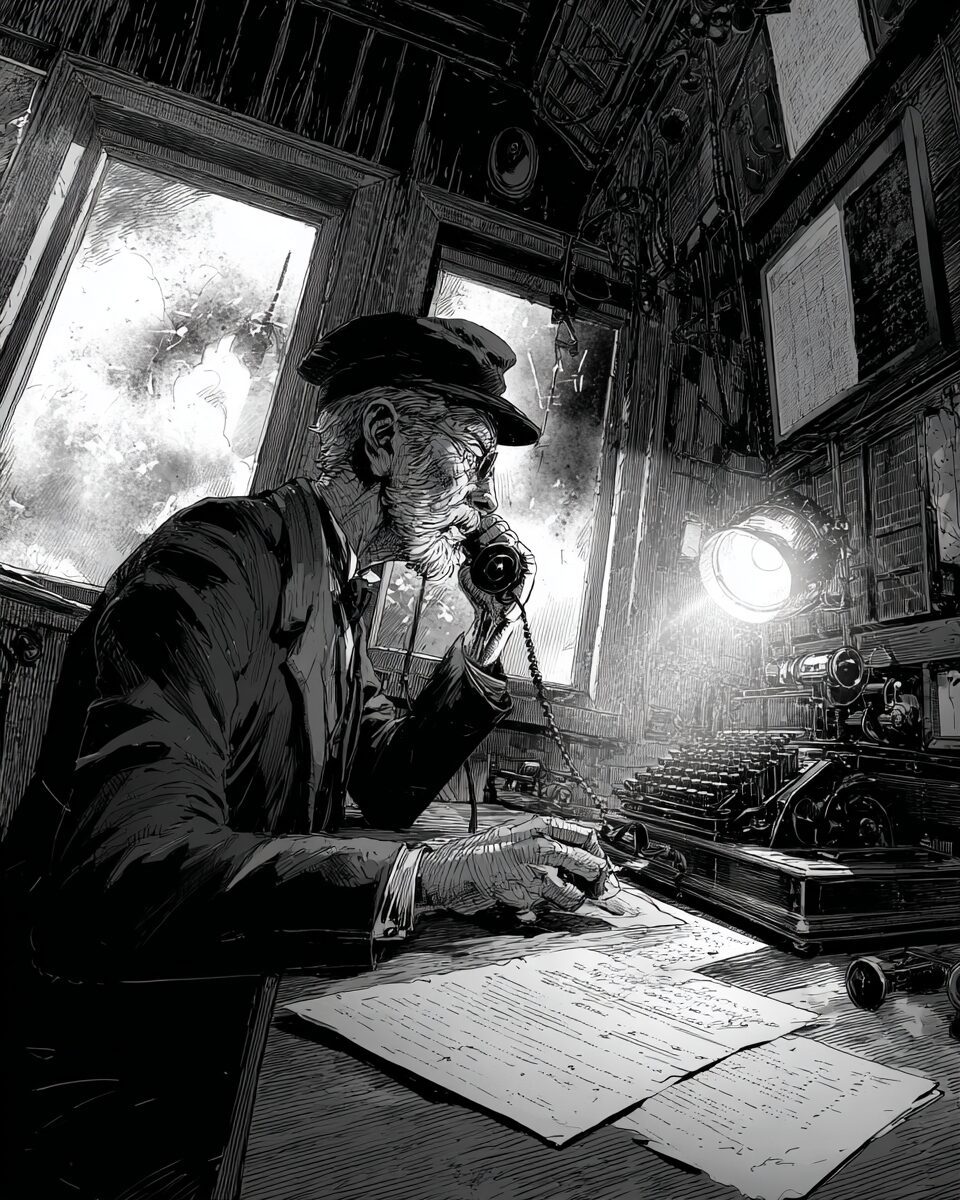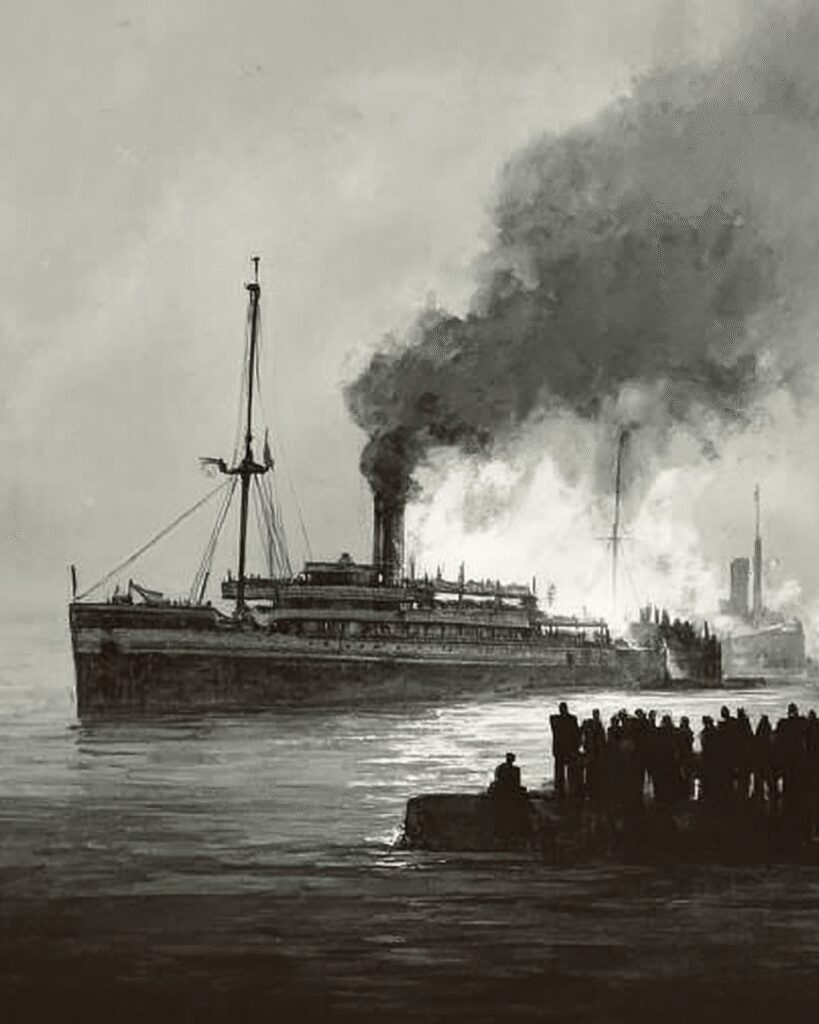Picture waking up on a crisp December morning in 1917, getting the kids ready for school, maybe grabbing a coffee while watching ships navigate the busy harbor outside your window. Normal Tuesday stuff. By 9:05 AM, your entire world has been vaporized by the largest human-made explosion in history.
Welcome to Halifax, Nova Scotia, December 6, 1917—the day a routine ship collision turned into an apocalyptic disaster that makes modern catastrophes look like minor fender-benders. When the French cargo ship SS Mont-Blanc, packed with enough explosives to level a small country, collided with the Norwegian vessel SS Imo, the resulting explosion devastated the Richmond district of Halifax and claimed at least 1,782 lives in a matter of seconds.
The blast—equivalent to 2.9 kilotons of TNT—instantly vaporized everything within 800 meters, created a 100-foot tsunami, and flattened over 1 square mile of the city, making it the largest human-made explosion before anyone even dreamed of splitting atoms.
But here’s the truly chilling part: for nearly twenty minutes, this floating time bomb drifted toward Halifax’s bustling waterfront while crowds gathered to watch what they thought was just a spectacular ship fire. Parents lifted children on their shoulders for a better view. Office workers pressed their faces against windows. Nobody had a clue they were staring at their own deaths.
When Two Ships Became a Recipe for Armageddon
The morning started with the kind of bureaucratic chaos that would be comedic if it didn’t end in mass annihilation. The Mont-Blanc was carrying what can only be described as a floating arsenal: 2,653 tons of picric acid, 200 tons of TNT, 10 tons of gun cotton, and 35 tons of benzol. Enough firepower to make a dent in the European war effort—or accidentally obliterate a Canadian port city.
The Collision That Started the Countdown
At 8:45 AM, the French cargo ship SS Mont-Blanc collided with the Norwegian vessel SS Imo in Halifax Harbour. The impact was relatively minor—just some scraped paint and bent metal. But sparks from the collision ignited the benzol on Mont-Blanc’s deck, and suddenly the crew found themselves aboard the world’s most dangerous bonfire.
Here’s where things get darkly absurd: the Mont-Blanc’s crew knew exactly what they were carrying. So when flames started licking at their deck, they didn’t stick around to fight the fire or warn anyone on shore. They abandoned ship faster than rats and rowed for their lives, leaving their floating bomb to drift wherever the hell it wanted to go.
Which, as fate would have it, was straight toward Halifax’s packed waterfront district.
Twenty Minutes of Oblivious Terror
For nearly twenty minutes, the burning Mont-Blanc drifted toward the city like something out of a disaster movie. The ship’s benzol-fueled flames created a spectacular display that drew spectators from across the city. What they didn’t know was that beneath those pretty orange flames lay enough explosives to create their own mushroom cloud.
Children skipped school to watch the show. Dock workers paused their morning tasks. People telephoned their friends to come see the burning ship. It was the kind of crowd you’d expect for a parade or fireworks display, not a front-row seat to the apocalypse.
9:04:35 AM – When Halifax Ceased to Exist
At exactly 9:04:35 AM, roughly 3,000 tons of explosives detonated with the force of a small nuclear weapon. The blast flattened more than 1 square mile of the city, but “flattened” doesn’t begin to capture the sheer violence of what happened.
The Richmond District Gets Erased
The Richmond district—home to thousands of working-class families, shops, schools, and churches—didn’t just get destroyed. It got atomized. Buildings didn’t collapse; they disintegrated into their component molecules. People closest to the explosion were literally vaporized, leaving behind only shadows burned into the few walls that remained standing.

The explosion created its own weather system, generating a mushroom cloud that rose over a mile into the sky. Trees were stripped bare and snapped like matchsticks. Iron railway rails twisted into impossible sculptures. The concrete walls of the Acadia Sugar Refinery—three feet thick—were reduced to powder.
But wait, it gets worse.
The Tsunami Nobody Saw Coming
The explosion displaced massive amounts of harbor water, creating a tsunami that reached heights of 100 feet in some areas. This wasn’t just a big wave—it was a wall of water mixed with debris, bodies, and chunks of the obliterated Mont-Blanc that crashed over both sides of the harbor.
Survivors who had somehow escaped the initial blast found themselves swept away by this apocalyptic flood. The wave was so powerful it carried the Mont-Blanc’s anchor shank—weighing over half a ton—nearly two miles inland, where it landed in the woods and remains today as a monument to physics gone horribly wrong.
Heroes in Hell: Stories from the Apocalypse
In the midst of this man-made apocalypse, ordinary people did extraordinary things. The most famous hero was Vincent Coleman, a railway dispatcher who realized that a passenger train carrying nearly 300 people was approaching the city, completely unaware of the disaster.
Vincent Coleman’s Final Message
Instead of running for his life, Coleman stayed at his telegraph key and hammered out a warning: “Hold up the train. Ammunition ship afire in harbor making for Pier 6 and will explode. Guess this will be my last message. Good-bye boys.”

He saved 300 lives with that message, dying at his post when the explosion hit moments later. Coleman’s sacrifice became one of the few bright spots in a day that proved humanity’s capacity for both catastrophic stupidity and incredible heroism.
The Aftermath: A City in Ruins
When the smoke cleared and the fires died down, Halifax looked like a war zone—which, in many ways, it was. At least 1,782 people had died instantly, with hundreds more dying from injuries in the following days. Nearly 9,000 were injured, many blinded by flying glass as they watched the burning ship through their windows.
About 25,000 people—roughly half of Halifax’s population—were left homeless just as winter was setting in. The explosion had been heard 100 miles away in Prince Edward Island, windows had shattered 60 miles away in Truro, and the shock wave was felt as far as Sydney, Cape Breton, over 200 miles distant.
The Ripple Effects: How Disaster Sparked Change
The Halifax Explosion didn’t just destroy a city—it revolutionized how the world thinks about maritime safety, disaster response, and urban planning. The lessons learned from this catastrophe echo through every modern emergency protocol.
Maritime Safety Gets a Reality Check
The Halifax Explosion forced the maritime world to confront a terrifying truth: ships carrying explosive cargo were essentially floating weapons of mass destruction. The disaster prompted sweeping changes in port regulations worldwide, including stricter rules for transporting hazardous materials through populated areas.
Suddenly, the idea of sailing a ship packed with explosives through a busy harbor seemed less like standard wartime logistics and more like maritime Russian roulette.
Canada’s Emergency Response Evolution
In the immediate aftermath, as snow began falling on the devastated city, one of the largest relief efforts in Canadian history swung into action. Trains loaded with medical supplies, doctors, and volunteers rushed north from across Canada and the United States. The response was so swift and well-coordinated that it helped establish protocols for international disaster relief that are still used today.
The disaster led to permanent improvements in emergency response:
- Enhanced emergency communication systems that could function during catastrophes
- Specialized training programs for first responders dealing with large-scale disasters
- Establishment of dedicated disaster relief organizations with pre-positioned supplies
Rebuilding from Ashes: Halifax’s Phoenix Moment
Halifax’s recovery became a testament to human resilience and the power of community solidarity. The city’s reconstruction was swift and comprehensive, with innovative urban planning approaches emerging from the rubble. The Maritime Museum of the Atlantic now houses a permanent exhibit dedicated to the explosion, ensuring future generations understand both its horror and its lessons.
Today, commemorative initiatives include the Halifax Explosion Memorial Bell Tower, annual remembrance ceremonies on December 6th, and educational programs that preserve survivors’ stories. These memorials serve as sobering reminders that in our interconnected modern world, a single moment of bad luck, poor communication, or human error can still reshape entire communities.
The Halifax Explosion remains history’s ultimate reminder that civilization—for all its achievements and safeguards—can be shattered in seconds by forces we think we control but never truly master.

